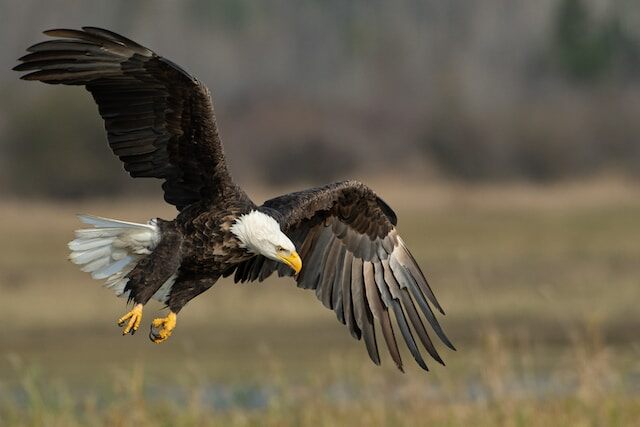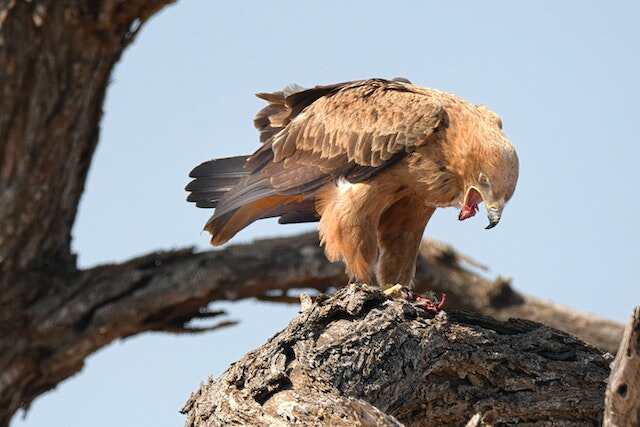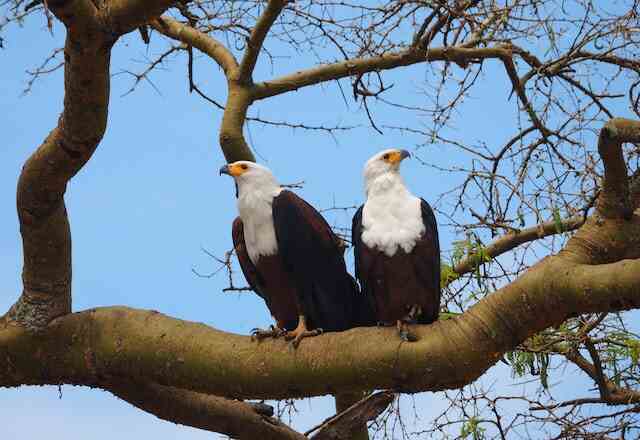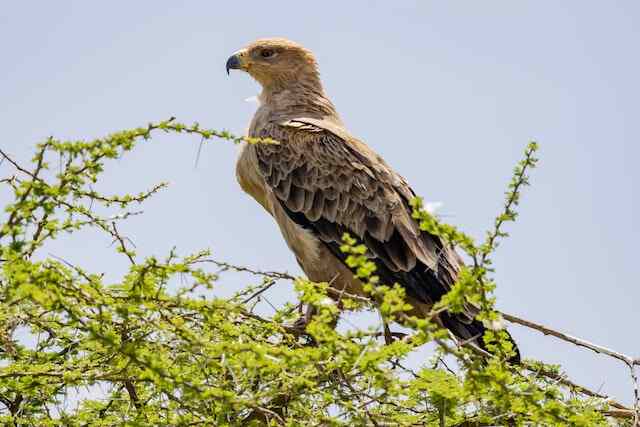Are Eagles Carnivores? Get ready to embark on a mouth-watering journey into the world of eagle gastronomy! These majestic birds of prey have held humans in awe for centuries, with their powerful wings, razor-sharp talons, and unparalleled hunting prowess.
But let’s delve deeper into their dining preferences. Join us as we unravel the mysteries of eagle biology, their diverse habitats, and their insatiable appetite for meat.
From the adaptations that make them top carnivores to the intriguing prey they pursue and scavenge, we’ll leave no stone unturned.
And don’t forget the cultural significance that surrounds these remarkable avian creatures. Hungry for knowledge? Prepare to feast on the captivating secrets of eagle cuisine!
Table of Contents
- 1 Key Takeaways
- 2 Overview of Eagle Biology
- 3 Eagle Diet
- 4 Are Eagle’s Carnivores
- 5 Carnivorous Adaptations
- 6 Eagle Prey
- 7 Scavenging Behavior
- 8 Seasonal Variations in Diet
- 9 Geographic Variations in Diet
- 10 Eagle Conservation
- 11 Eagle-Prey Relationships
- 12 Cultural Significance
- 13 Future Research Directions
- 14 Frequently Asked Questions
- 15 Conclusion
- 16 Author
Key Takeaways
- Eagles are large birds of prey with a carnivorous diet.
- Their anatomy is well-suited for hunting and killing prey, with sharp talons and a hooked beak for tearing flesh.
- Eagles have excellent vision, allowing them to spot prey from great distances.
- Eagles use a variety of hunting tactics, including ambush, pursuit, and cooperative hunting, and scavenge for carrion, especially during winter months.

Overview of Eagle Biology
Eagles are apex predators that primarily feed on meat and are known for their impressive hunting abilities. Their anatomy is well-suited for this lifestyle, with sharp talons for catching and killing prey, and a hooked beak for tearing flesh.
Eagles also have excellent vision, with eyes that are more powerful than humans, allowing them to spot prey from great distances.
Breeding habits vary among different species of eagles, but most mate for life and build large nests in high places. These nests are used year after year, as eagles are known for their long lifespans.
While eagle diet varies depending on the species and location, all eagles are carnivores, and their diet consists mainly of fish, small mammals, and birds.
With their impressive hunting skills, eagles are able to catch prey that is often larger than themselves, making them a formidable predator in the animal kingdom.
Eagle Diet
Raptors, such as the bald eagle, are known for their preference for a diet consisting mainly of meat.
Eagles are carnivores and their hunting techniques are well adapted to capture prey.
They are opportunistic hunters, and their prey selection preferences can vary depending on their habitat and food availability.
Eagles can hunt both on land and in water, and they have been observed hunting fish, small mammals, reptiles, and other birds.
They use their sharp talons to grab their prey and their powerful beaks to tear meat apart.
Eagles have a keen sense of sight that allows them to spot their prey from great distances, and they can fly at high speeds to catch them.
Their hunting techniques and prey selection preferences are just a few examples of their carnivorous adaptations.
Are Eagle’s Carnivores
Yes, eagles are carnivores. These majestic birds of prey possess adaptations such as hooked beaks and sharp talons for capturing and consuming meat.
They primarily feed on a variety of prey, including fish, small mammals, birds, and carrion. Their carnivorous nature allows them to thrive as top predators in their ecosystems.

Carnivorous Adaptations
Carnivorous birds of prey like eagles have evolved unique adaptations that enable them to effectively hunt and kill their prey.
Two of their most prominent features are their powerful beaks and sharp talons, which are specifically designed for killing and tearing flesh.
In addition to their physical attributes, eagles possess incredibly sharp eyesight that allows them to spot prey from great distances and plan their hunting strategies accordingly.
Beaks and Talons
Despite their sharp and pointed beaks, and razor-sharp talons, these birds of prey possess a remarkable ability to delicately manipulate their prey.
The beak structure of eagles is designed to tear flesh and break bones, allowing them to hunt efficiently.
However, their beaks are also incredibly sensitive, allowing them to feel their prey’s movements and adjust their grip accordingly.
Their talons, on the other hand, are designed to grasp and hold their prey tightly, preventing them from escaping.
Eagles use their hunting techniques to stalk their prey from above, watching and waiting for the perfect opportunity to strike.
They often use their speed and agility to swoop down and grab their prey in mid-air.
Their ability to delicately manipulate their prey allows them to take down larger animals with ease. This skill is essential for their survival in the wild, as they rely on hunting to sustain themselves.
Moving forward, let’s explore how eagles use their exceptional eyesight and hunting strategies to capture their prey.
Eyesight and Hunting Strategies
The remarkable eyesight and hunting strategies of these birds of prey are a testament to their innate ability to survive in the wild.
Eagles are known for their exceptional visual acuity, allowing them to spot prey from great distances.
They also have the ability to perceive UV light, which aids in their hunting tactics by allowing them to see prey that is camouflaged or hidden.
In addition to their sharp vision, eagles are also skilled hunters. They use a variety of tactics, including ambush, pursuit, and cooperative hunting, to catch their prey.
Eagles are known to use their powerful talons to grab and hold onto their prey, which can range from small rodents to large mammals.
Their hunting strategies are not only efficient, but also fascinating to observe.
Understanding these tactics can give us a greater appreciation for the intelligence and adaptability of these incredible birds.
Moving on to the next section about ‘eagle prey’, we can see how their hunting strategies are put to use in the wild.

Eagle Prey
One of the primary food sources for eagles is small mammals, such as rodents and rabbits, which they hunt and capture with their powerful talons.
Eagles are carnivorous birds that have evolved to be highly efficient predators. They use a variety of hunting tactics, including stealth, speed, and agility, to catch their prey.
These tactics have a significant impact on the ecosystem, as eagles help to control the populations of small mammals and other prey species.
In addition to small mammals, eagles also prey on fish, reptiles, and other birds. They are opportunistic hunters, and will take advantage of any available food source.
However, eagles are not exclusively hunters, and also exhibit scavenging behavior when the opportunity arises. This behavior will be explored in the subsequent section.
Scavenging Behavior
Scavenging behavior is a common trait among many species of animals, including eagles.
One of the most common sources of food for scavenging eagles is carrion, or the remains of dead animals.
Additionally, some eagles have been known to scavenge from garbage dumps, where they can find a variety of food sources.
Carrion
Carrion is a vital food source for eagles, who rely on the remains of dead animals for sustenance. Eagles are known to scavenge for carrion, especially during the winter months, when hunting prey becomes more difficult.
However, eagles must compete with other scavengers, such as vultures, for access to carrion.
This competition can lead to aggressive behavior and can even result in disease transmission among scavengers. To illustrate the importance of carrion to eagles, consider the following table:
| Animal | Percent of eagle diet |
|---|---|
| Deer | 15% |
| Rabbit | 10% |
| Fish | 25% |
| Carrion | 50% |
| Other | 0% |
As you can see, carrion makes up a significant portion of the eagle’s diet. However, the eagles’ reliance on carrion can also lead to conflicts with humans, particularly when eagles scavenge at garbage dumps.
Despite these challenges, eagles have adapted to survive in a variety of environments and continue to thrive as one of nature’s most fascinating predators.
Garbage Dumps
Garbage dumps can provide a potential source of food for certain members of the ecosystem, including eagles. However, this has significant implications for waste management and the overall environmental impact.
As eagles are carnivorous, they may scavenge from the garbage dumps, which can result in increased waste decomposition and potentially harmful pollutants being spread throughout the environment.
Additionally, the ingestion of contaminated food can result in health concerns for the eagles and their prey.
It is important to consider the potential consequences of waste disposal and management practices on the ecosystem and the organisms that inhabit it.
Understanding the impact of garbage dumps on the eagle’s diet can provide insight into their overall ecological role and the importance of responsible waste management.
Moving on to the subsequent section about ‘seasonal variations in diet’, it is important to note how this factor can further affect the eagle’s ecological role.

Seasonal Variations in Diet
Throughout the year, eagles’ diets vary depending on the availability of prey in their habitat. Seasonal changes in their diet are influenced by the migration patterns of their prey, as well as changes in temperature and weather.
In general, eagles are carnivorous and primarily feed on fish, birds, and small mammals. However, their dietary preferences shift depending on the season.
During the breeding season, eagles tend to consume more small mammals to provide for their young.
In the winter, when fish are less abundant, eagles may turn to scavenging or hunting larger mammals such as deer.
A study found that in the summer, eagles in the Great Lakes region consume more fish, while eagles in the Chesapeake Bay area feed more on waterfowl.
This highlights the importance of understanding the seasonal variations in an eagle’s diet to better protect their habitats and ensure a stable food supply.
As we move into the next section about geographic variations in diet, it is important to note that eagles’ diets are not only influenced by the season, but also by their specific location and habitat.
Geographic Variations in Diet
Across different regions, the dietary preferences of these majestic birds of prey exhibit remarkable diversity, reflecting the complex interplay of ecological factors that shape their habitats.
Geographic variations in diet are largely driven by migration patterns and prey availability.
Eagles that live near coastal areas, for example, tend to feed on fish, while those inhabiting inland regions may focus on small mammals such as rodents and rabbits.
In some parts of the world, eagles have been observed scavenging on carrion and even consuming insects, demonstrating their adaptability to changing environments.
However, with habitat destruction and climate change altering prey availability, the dietary choices of eagles may be increasingly challenged.
As such, it is crucial to develop conservation strategies that prioritize the protection of their habitats and prey species, ensuring the continued survival of these awe-inspiring creatures.
Eagle Conservation
Geographic variations in diet among eagles have been well documented, highlighting the adaptability of these birds of prey to different environments.
However, despite their impressive hunting abilities and status as apex predators, eagles remain vulnerable to habitat loss and other human-induced threats.
The global eagle population has been declining in recent years, with many species facing endangered status.
Habitat loss, caused by deforestation, urbanization, and other human activities, is one of the primary factors contributing to this decline.
Conservation efforts aimed at protecting eagle habitats and managing human activities in these areas are critical for the long-term survival of these majestic birds.
Without such efforts, eagle populations will continue to decline, and the ecological balance of their habitats will be disrupted.
With this in mind, it is essential to understand the complex relationships between eagles and their prey, which we will explore in the subsequent section.

Eagle-Prey Relationships
The Eagle-Prey Relationships subtopic delves into the dynamics between eagles and their prey.
This includes exploring the ecological significance of these interactions and their impact on the ecosystem as a whole.
By examining the predator-prey dynamics within eagle communities, researchers can gain insight into the behavior and ecology of these magnificent birds.
Predator-Prey Dynamics
Understanding the intricate predator-prey dynamics is crucial in comprehending the role of eagles, which are known carnivores, in maintaining a balanced ecosystem.
Prey behavior and predator avoidance are significant factors in this relationship, as predators such as eagles rely on their prey for survival.
Prey animals have developed various strategies to avoid being hunted, such as camouflage, mimicry, and defensive behaviors.
In response, predators have evolved to be effective hunters, with keen senses, powerful talons, and sharp beaks.
These dynamics create a delicate balance within ecosystems, where the survival of one species depends on another.
Eagles, as apex predators, play a vital role in this balance by controlling the populations of their prey and preventing overgrazing or overpopulation.
Their presence also influences the behavior of other animals, creating a ripple effect throughout the food chain.
Understanding the predator-prey dynamics provides insight into the ecological significance of eagles and their importance in maintaining a healthy and sustainable ecosystem.
Ecological Significance
Just as a single thread is crucial for the integrity of a tapestry, each species within an ecosystem plays a vital role, and the ecological significance of these interactions cannot be overstated.
Eagles, as carnivorous predators, have an impact on the food chain and predator-prey relationships in their ecosystem.
By preying on other animals, such as small mammals and fish, eagles help to regulate populations and maintain a balance in the ecosystem.
Additionally, the presence of eagles in an ecosystem can have cascading effects on other species and their interactions.
For example, the fear of being hunted by eagles may cause certain prey species to alter their behavior, leading to changes in their feeding habits or migration patterns.
Understanding the ecological significance of eagles and their role in their ecosystem is crucial for conservation and management efforts.
By protecting and preserving these birds, we can ensure the stability and health of their ecosystems.
Moving forward, it is important to consider both the cultural and ecological significance of eagles in our efforts to conserve and protect these majestic creatures.

Cultural Significance
The cultural significance of eagles is evident in their portrayal in mythology and symbolism across many cultures worldwide. From the ancient Greeks to Native American tribes, eagles have been revered as powerful symbols of strength, freedom, and courage.
Furthermore, humans have interacted with eagles throughout history, with examples ranging from the use of eagle feathers in traditional regalia to modern-day conservation efforts aimed at protecting these majestic birds of prey.
Understanding the cultural significance of eagles is crucial to appreciating their importance in various contexts, from folklore to conservation.
Mythology and Symbolism
Mythology and symbolism have long associated eagles with power, strength, and freedom, making them a popular choice in various cultures as symbols of nobility and patriotism.
In Greek mythology, the eagle was the bird of Zeus and was a symbol of divine power.
In Native American cultures, the eagle is seen as a messenger between humans and the spirit world, and its feathers are used in important rituals.
In ancient Rome, the eagle was a symbol of power and was often depicted on their military standards.
The bald eagle is also the national bird and symbol of the United States, representing freedom and independence.
The widespread use of eagles in different cultures as symbols of strength and freedom highlights the universal appeal of these majestic birds.
However, as humans continue to encroach on their habitats and disrupt their ecosystems, the interactions between eagles and humans have become more complex and sometimes problematic.
Human Interactions
As human encroachment on natural habitats increases, the complex interactions between these majestic birds and humans have become increasingly problematic.
Human-wildlife conflict is a growing concern for eagle conservation efforts, as eagles often come into conflict with humans due to habitat loss, prey depletion, and accidental poisoning.
Some of the current challenges facing eagles include electrocution from power lines, collision with wind turbines, and illegal hunting.
In addition, eagles may be affected by climate change, which could alter their migration patterns and impact their food sources.
As a result, conservationists are working to mitigate these issues by developing solutions such as retrofitting power lines with bird-safe measures, implementing wind turbine regulations, and increasing public awareness about the importance of eagle conservation.
Future research directions could include further studies on the impact of climate change on eagle populations and the development of new technologies to reduce human-wildlife conflicts.
Overall, it is crucial that we continue to prioritize eagle conservation efforts to ensure the survival of these magnificent birds for generations to come.

Future Research Directions
Further investigations into the dietary habits of eagles could open up avenues for understanding their ecological role in various ecosystems.
Inter-species interactions and nutritional requirements are crucial factors that can affect the feeding habits of eagles.
Future research directions can explore the impact of changes in the environment on the feeding patterns of eagles and how this, in turn, affects the broader ecosystem.
There is also a need for studies that delve into the prey preference of eagles and how this affects the population dynamics of both prey and predator species.
Such research can provide valuable insights into the role of eagles as apex predators and their impact on the food chain.
Additionally, future research can explore the impact of human activities on the feeding habits of eagles, including the effects of habitat loss, pollution, and climate change.
By understanding the dietary habits of eagles, we can make better-informed decisions about conservation efforts and ecosystem management, ultimately contributing to the preservation of these magnificent creatures and their habitats.
Frequently Asked Questions
What is the average lifespan of an eagle?
The average lifespan of eagles varies by species, habitat, and breeding habits. However, dietary habits and prey preferences are significant factors that influence their longevity. Eagles are carnivores with a preference for fish, small mammals, and birds.
How do eagles communicate with one another?
Ironically, eagles communicate with each other through vocalizations and body language. Their hunting strategies are executed with precision, highlighting their keen senses. This scientific and objective approach engages audiences who value freedom.
Can eagles swim?
Eagles are capable of swimming short distances, but it is not their preferred method of movement. Their swimming ability varies depending on the species and habitat. Eagles are known to inhabit areas near bodies of water, but not all species are aquatic.
What is the largest species of eagle in the world?
The world’s largest eagle is the Philippine eagle, which boasts a wingspan of up to 7 feet. It is found only in the Philippines, and is known for its monogamous breeding habits. Despite its impressive size, the species is considered critically endangered due to habitat loss.
How do eagles protect themselves from predators?
Eagles have developed several predator defense mechanisms to protect themselves from threats, including camouflage techniques such as blending in with their surroundings. These techniques allow eagles to remain undetected and avoid potential danger.

Conclusion
The eagle is a formidable predator, possessing a unique set of adaptations that allow it to excel in its role as a carnivore. Its sharp talons, powerful beak, and keen eyesight allow it to capture and kill prey with great efficiency.
Despite its reputation as a fearsome predator, eagles are also known to scavenge for food, taking advantage of carrion when it is available.
The diet of an eagle varies depending on the species and its habitat, but it is generally composed of meat. Eagles are known to feed on a variety of prey, including fish, small mammals, birds, and reptiles.
They are also known to take down larger animals, such as deer and antelope, in some cases.
Interestingly, some species of eagles are known to be opportunistic hunters, taking advantage of human activity and feeding on domestic animals or garbage.
One interesting statistic that conveys a deeper meaning is that eagles are apex predators, meaning that they are at the top of the food chain in their respective ecosystems.
This is significant because it highlights the important role that eagles play in maintaining the balance of these ecosystems.
When eagles are present, they help to control the populations of their prey species, which in turn helps to prevent overgrazing and other negative impacts on the environment.
Additionally, eagles are often used as indicators of the health of their ecosystems, as their presence or absence can provide insights into the overall health and stability of the ecosystem.


